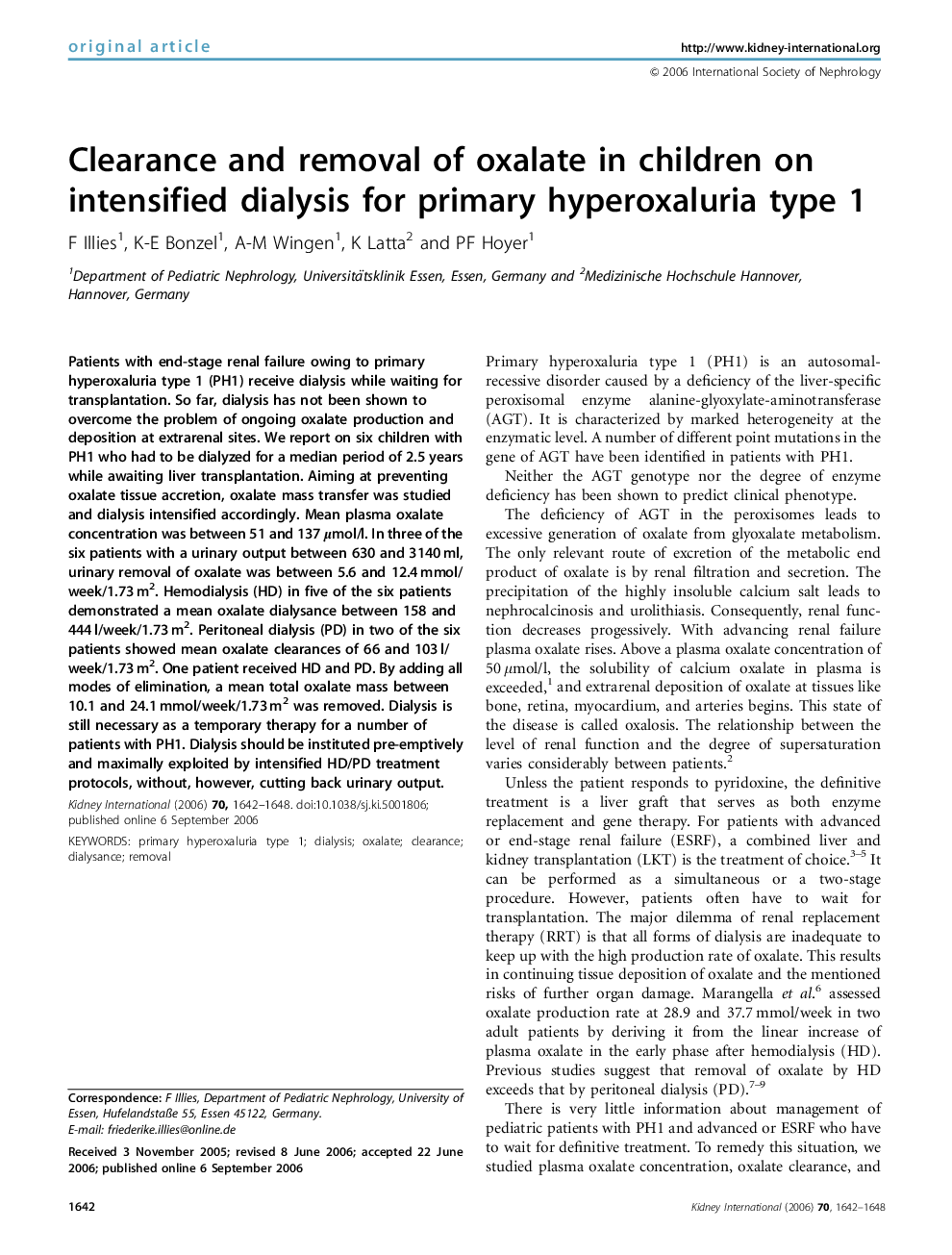| Article ID | Journal | Published Year | Pages | File Type |
|---|---|---|---|---|
| 3889436 | Kidney International | 2006 | 7 Pages |
Patients with end-stage renal failure owing to primary hyperoxaluria type 1 (PH1) receive dialysis while waiting for transplantation. So far, dialysis has not been shown to overcome the problem of ongoing oxalate production and deposition at extrarenal sites. We report on six children with PH1 who had to be dialyzed for a median period of 2.5 years while awaiting liver transplantation. Aiming at preventing oxalate tissue accretion, oxalate mass transfer was studied and dialysis intensified accordingly. Mean plasma oxalate concentration was between 51 and 137 μmol/l. In three of the six patients with a urinary output between 630 and 3140 ml, urinary removal of oxalate was between 5.6 and 12.4 mmol/week/1.73 m2. Hemodialysis (HD) in five of the six patients demonstrated a mean oxalate dialysance between 158 and 444 l/week/1.73 m2. Peritoneal dialysis (PD) in two of the six patients showed mean oxalate clearances of 66 and 103 l/week/1.73 m2. One patient received HD and PD. By adding all modes of elimination, a mean total oxalate mass between 10.1 and 24.1 mmol/week/1.73 m2 was removed. Dialysis is still necessary as a temporary therapy for a number of patients with PH1. Dialysis should be instituted pre-emptively and maximally exploited by intensified HD/PD treatment protocols, without, however, cutting back urinary output.
